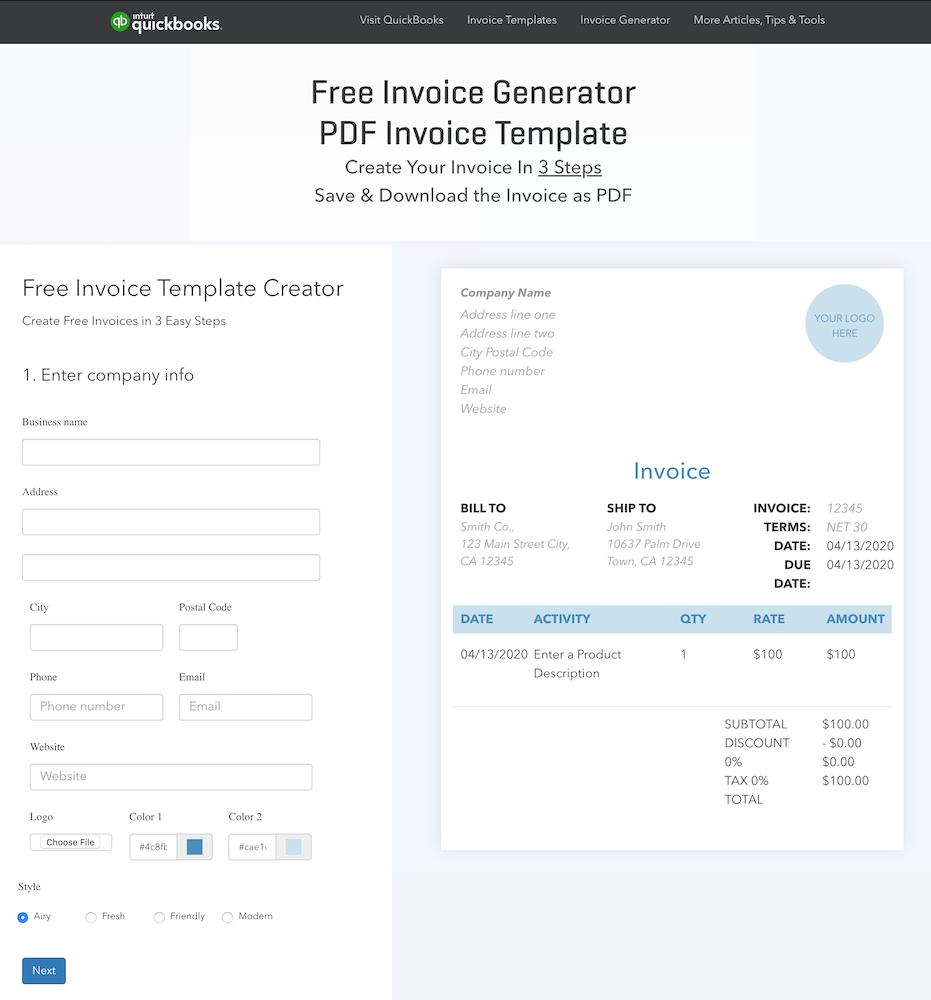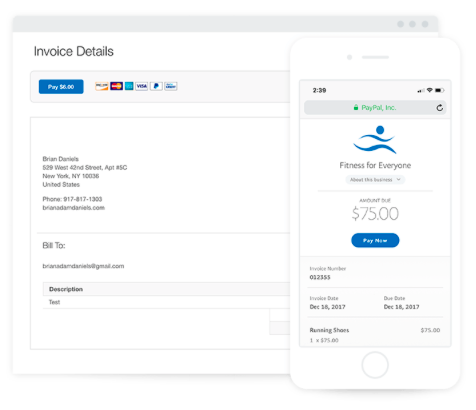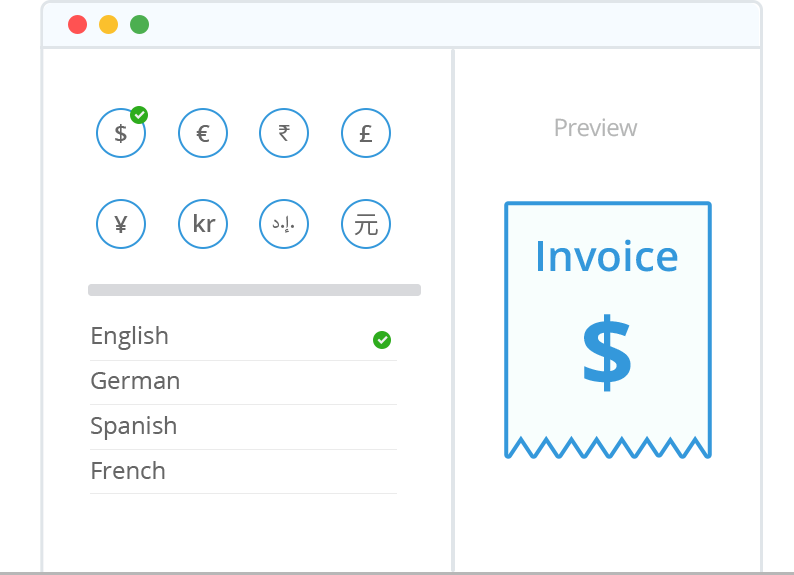Invoicing clients can be a drag. They might misplace the bill, forget to send a check, or any number of possible scenarios. Before you know it, the due date has passed and your agency’s revenue stream is fading. What can you do?
First, it’s important to remember that unpaid invoices may not just be annoying to you but your client as well. Perhaps they haven’t paid because the process wasn’t fully explained to them or it’s clunky and outdated. Your invoicing method could impact your customer relationships and ultimately how well you retain customers.
Below are ten tips for improving your invoicing process. These tactics, such as asking for a deposit or using a recurring billing method, can actually ensure that your clients’ needs are being met while also making sure your agency is paid quicker. It’s the ultimate win-win.
10 Ways to invoice clients and get paid on your terms
1. Establish clear expectations in the contract
Perhaps the best way to ensure that your agency is paid promptly is to clarify the payment terms before a client ever signs a contract. Make this an active conversation instead of just including the expectations within the fine print. This prevents client confusion about when to pay, how to pay, and what the policy is for late fees.
Setting aside time to discuss payment processes also allows you to learn if the client has any special requests. For example, does the client prefer to receive an invoice by mail or electronically? Do they prefer to pay by credit card or check?
Discussing expectations during your client onboarding process not only reduces the chance that they’ll have to be chased down later for unpaid invoices but shows that you’re willing to accommodate their payment preferences. In short, it’s a simple and easy way of providing additional customer service and increasing customer loyalty.
2. Ask for a deposit
Paying a deposit on a large purchase is not unusual. It’s no different when contracting with a marketing or advertising agency. Aside from providing the agency with upfront revenue, having clients pay a deposit accomplishes two things:
- It weeds out any “red flag” clients.
If you notice that a new customer is overly focused on cost or resistant to paying a deposit, then chances are they won’t pay future invoices on time. Broaching the subject of paying a deposit now could save you a lot of frustration later. - It ensures the mechanics of the invoicing process are working properly.
Whether the customer asked to receive an invoice by mail or wants to pay via PayPal, starting the relationship off with a deposit helps make sure that the process works as it should be. That way, when the next invoice comes around, both parties can feel confident with how to proceed.
3. Include contact information and project specifics on the invoice
Invoices are often passed off to an organization’s financial team or someone with authority to make purchasing decisions. Having your agency’s contact information marked on the invoice makes it easy for other potential stakeholders to get in touch should they have any questions.
Another thing is to make sure the invoice is being billed to the correct person. If your primary contact is not the person who ultimately pays the bills, figure out who is. You can save yourself and your client a lot of time by billing to that person directly.
See how QuickBooks does it with their invoice software:

In addition to spaces reserved for contact information, this FreshBooks invoice template also includes space for descriptions about different project components:

While this might seem like common sense, adding extra details can help create trust between you and your client. Being specific about the individual components of a project, such as “created post-click landing page for Facebook retargeting ads campaign,” reminds the client of all the different tasks associated with bringing one campaign to life.
4. Include late payment terms on the invoice
Chances are, a client won’t review their copy of the contract for payment terms before settling a bill. You can make everyone’s jobs easier by including late payment terms at the bottom of every invoice. This can encourage clients to pay on time and prevent them from claiming they didn’t know about deadlines and late fees.
5. Deliver the invoice promptly
Many digital marketers debate about when to send an invoice. Some suggest waiting until a week after delivering a project, or waiting until after the client has had time to enjoy the product or service and can see the results, such as an increase in leads or conversions.
To get paid quickly, submit the invoice as soon as possible. This keeps your agency at the front of your client’s mind. It also shows that you’re dependable and attentive to details, which reaffirms that your agency was the best choice for the job to begin with.
6. Move clients to a retainer contract with recurring billing
Instead of waiting until the end of a long project to send an invoice — or waiting several more weeks or months on top of that to get paid — ask your client to switch over to a retainer contract.
From there, set up a recurring billing option that makes monthly withdrawals automatically from the client’s bank account or credit card. Not only does this save both of you a lot of time and headache, but also creates a more predictable and steadier cash flow for your agency.
For projects that require more time than usual to complete, a retainer/recurring payment plan alone might not always make sense. For example, a client might not be satisfied with the results of A/B testing and request that more experimental post-click landing pages be built. In this case, consider using a retainer against hours method, where you can send a monthly or quarterly invoice billing for time that exceeds the expectations of the retainer.
7. Invoice clients online
If you learned during the onboarding process that you can invoice your client online, then congratulations. There are several benefits to this, such as saving time and money on mailing paper invoices, as well as instant payment options for your client.
Using PayPal to invoice clients is a popular online payment method. The platform makes it easy to include a “Pay Now” button so that customers can settle their bill immediately:

This one-step process can prevent late payments and keep your revenue predictable and consistent.
8. Use invoicing software
Using cloud-based software can automate the invoicing process and reduce the amount of time you spend sending and following up on bills.
One of the most popular cloud-based tools is FreshBooks:

Many of the software’s features automate the best practices discussed here, including:
- Invoicing for a deposit
- Clearing showing contact info, project details, and late fee information
- Allowing clients to pay online instantly
- Converting to a different currency
Plus, FreshBooks’s own research claims that their software saves the average small business owner 192 hours each year. With their middle-tier plan priced at $25 per month, it’s a very reasonable option to invoice clients.
If you want to avoid paying for cloud accounting software, then consider sending invoices through PayPal:

The popular online payment portal offers free invoice templates with plenty of customization options, including easy currency conversion for international clients. The drawback? PayPal still takes their usual small fee from the final payment ($0.30 + 2.9% of the total).
9. Account for fees and exchange rates when invoicing international clients
Exchange rates, taxes, and other fees will likely all play a role when invoicing international clients. Avoid any surprises by discussing the topic at the same time that you clarify payment expectations during the client onboarding process.
It helps to do research on protocols for a particular country, or you can compose invoices with software. Many cloud accounting tools make currency conversions a breeze. Zoho, for instance, offers you the ability to create invoice templates in another language:

10. Build strong relationships with clients
Customers who feel valued beyond what revenue they provide your company are likely going to be more inclined to pay on time. There are several ways to do this, such as offering them a discount, helping them solve a problem, or even sending them an unexpected gift.
However, if you’ve followed the tips shared here, then you’re already halfway towards creating a great relationship with your customers. A consistent invoicing process provides several opportunities for clear communication, trust-building, and simplifying your client’s life with excellent customer service.
Start getting paid quickly and easily
Invoicing clients can be tough. It takes time to create and send bills, and even more time to follow-up and make sure invoices are paid by the deadline. Having a consistent and clear invoicing process can prevent a lot of frustration on both sides.
By setting clear expectations when and how the agency can be paid, then offering simple, instant payment methods that make clients’ lives easier can get you paid faster and strengthen your relationships. Chasing down customers for unpaid invoices can become a thing of the past.
For more details on how you can grow your agency, sign up for an Instapage Enterprise demo today.

See the Instapage Enterprise Plan in Action.
Demo includes AdMap™, Personalization, AMP,
Global Blocks, heatmaps & more.
